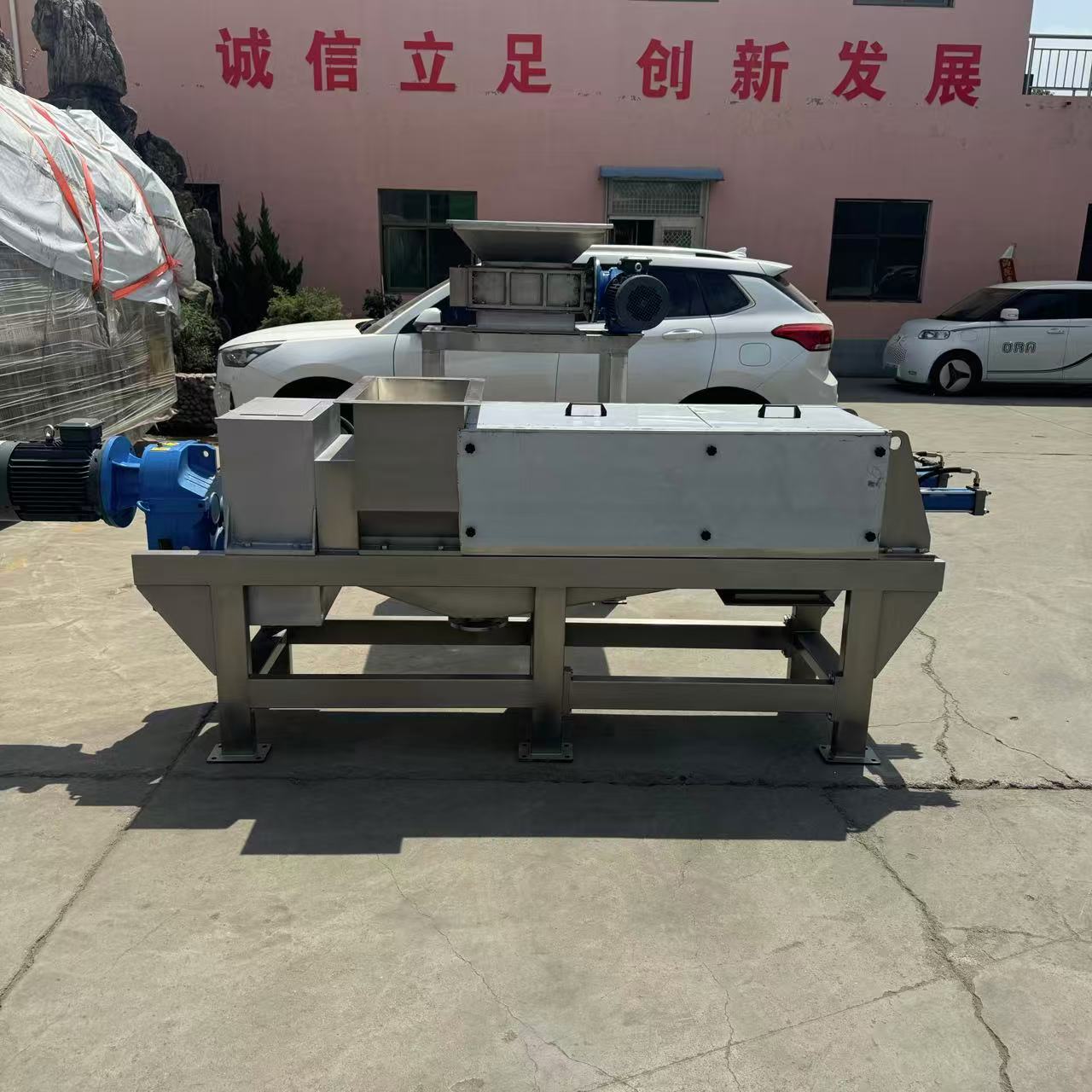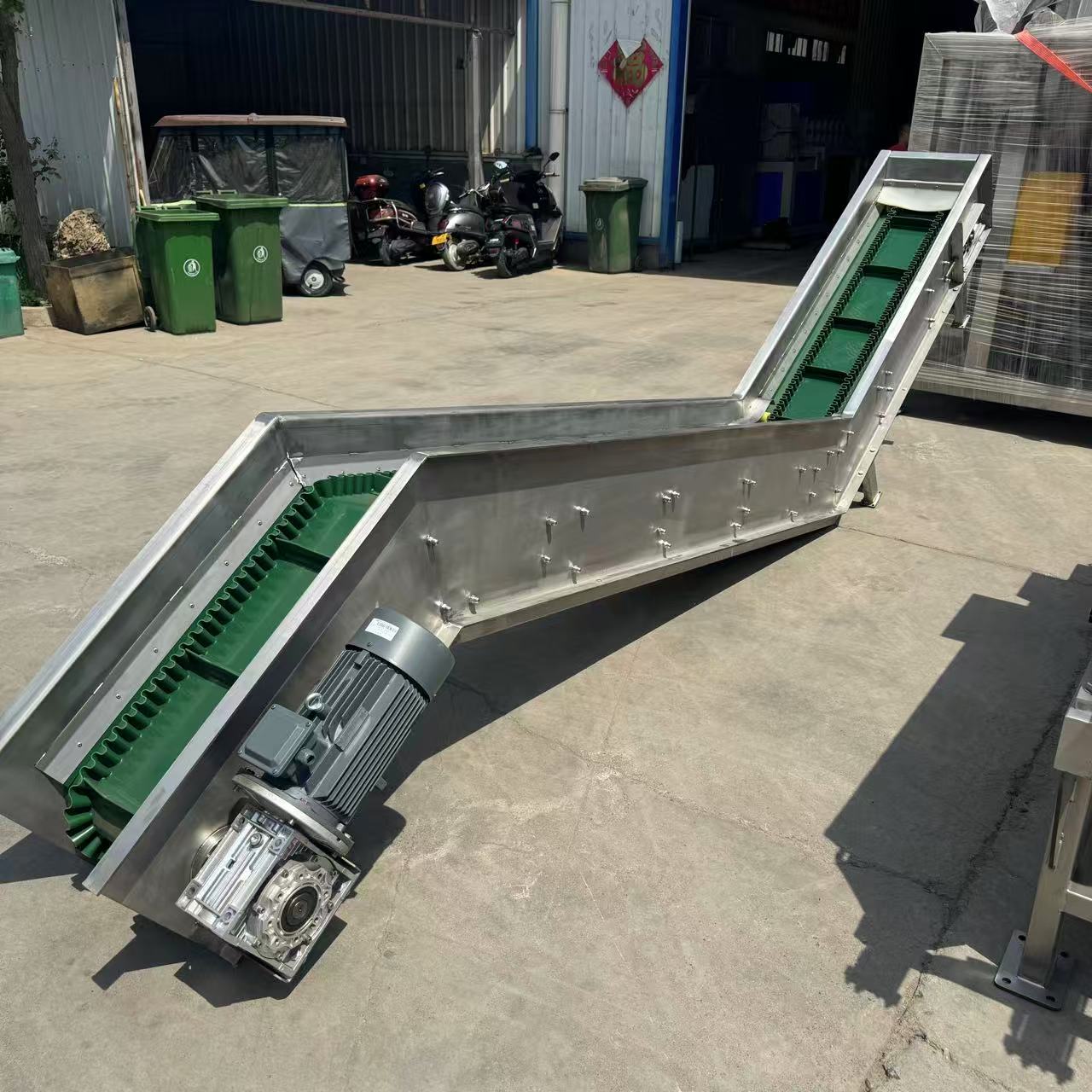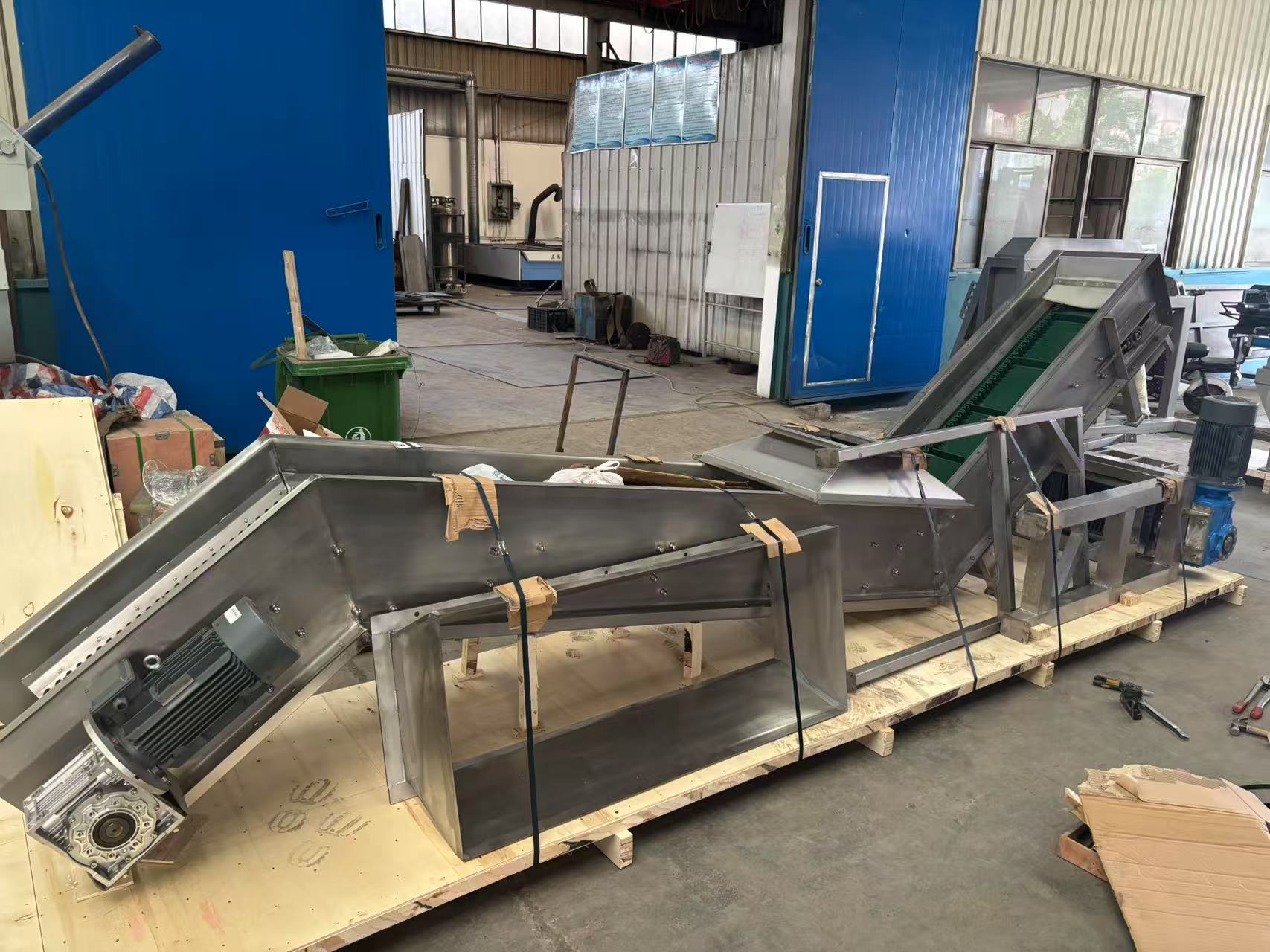Bean Sprout Waste Processing Line for a Canadian Client
Client Requirement
The Canadian client required a system to process 1,500 kg/h of bean sprouts waste generated during the washing of harvested sprouts. The goal was to recover solids from used washing water, which mainly contains bean sprout residues and mung bean husks.
Challenges
- High Moisture Content: Bean sprouts contain 80–90% water, making the waste bulky and costly to handle. The primary objective was to reduce both the weight and volume of the waste.
- Water Recovery: Efficient separation of water from solid residues was essential for environmental compliance and possible reuse.
- Space Limitation: The installation site provided only 1,000 mm width and 2,800 mm height, requiring highly compact and customized equipment design.
Solution
To address these challenges, we recommended a two-step integrated solution:
- Integrated Crushing & Press Machine
- Capacity: 1,500 kg/h
- Material: SS304 stainless steel
- Filter Precision: 0.6 mm
- This machine first crushes the waste and then performs screw pressing, effectively reducing moisture. The pressed residue can reach a 70% moisture content, achieving significant volume reduction and easier handling.

- Mobile Lift Conveyor with Hopper
- Capacity: 3 m³/h
- Dimensions: Length 3 m, Width 400 mm, Height 2 m
- Baffle Thickness: 6 mm
- Motor Power: 0.75 kW
- Material: SS304 stainless steel
- This conveyor provides efficient and flexible feeding while remaining mobile, ensuring easy integration within the limited available space.

- Customized Stainless Steel Water Tank
- Designed specifically for this project to collect and store the treated water for reuse.
Engineering Adaptation
Due to the strict space limitations, our engineering team continuously revised and optimized the equipment drawings. Through careful adjustment of dimensions and details, the final layout met the client’s operational needs while respecting the installation constraints.
Outcome
The solution not only reduces the waste volume significantly but also provides a sustainable method for water recovery. With the combination of crushing, pressing, and efficient conveying, the client now has a compact, reliable, and long-term waste management system that fits their production site perfectly.